The books Dragons Love Tacos by Adam Rubin and Not Your Typical Dragon by Dan Bar-el helped us with some dragon categorizing activities and food fun. These stories both really appealed to the kids and sparked some play ideas. (pun intended)
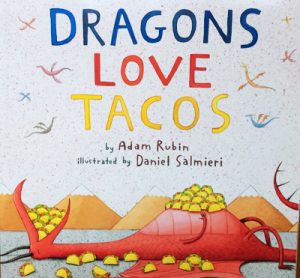
In Dragons Love Tacos, the dragons gobble up tacos but they hate salsa. All kinds of salsa. Hot, spicy foods gives them a tummy ache and they snort sparks from their nose. Unfortunately, at a taco party, the mild salsa has some bits of jalapeno and the dragons accidentally burn down the house. The good news is they help build it back up again.
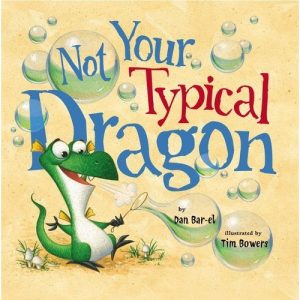
The dragon in Not Your Typical Dragon has a different problem. He is trying to create fire and so eats as much as he can that’s hot and spicy, like chili, curry, and salsa. His breath comes out not as flames but red party streamers.
These two stories talked about food that’s hot and spicy. I asked Little Sister what foods might be good for dragons to eat so they can breathe fire. She thought of a few things, like salsa of course, and some spicy dishes she doesn’t like. We went to the grocery story that afternoon, so she added in some foods that were red and orange, such as strawberries, raspberries, tomatoes, cherries, apples and peppers. She asked me what the red things were that grew in the garden that were kind of hot. I guessed a few things but couldn’t figure out what she meant. She looked around the store to see if she could find them and show them to me. She found some small red potatoes and hollered, “Radishes!” They were close enough to be a visual reminder to give her the brain-link to the word.
Radishes fit the category of hot foods for dragons. Of all the foods she could think of, Little Sister was sorting out the ones to make fiery breath. This involves a lot of thinking and analyzing. The skill of making groups is an important one for kids. It’s one of children’s early brain tools, shrinking huge amounts of information into smaller chunks. When we got home, just for a brain challenge, I set out some items for a sorting activity. One group was red and orange foods, the color of fire. The second group was hot and spicy.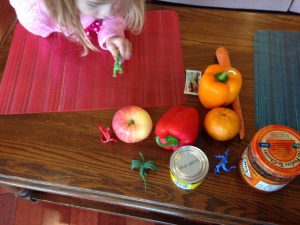
The peppers, apple, orange, carrot and salsa were in the colors group, and the wasabi and green chilis in the hot group. Hmmm…what about radishes and salsa? Would they go in the colors or the hot? They are both.
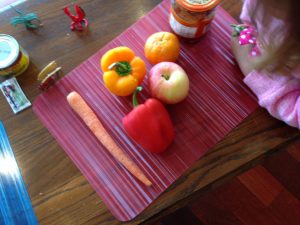
When making groups, younger kids will put the items into one or the other, but preschoolers a little older might realize the items can belong to more than one group at the same time. The solution? The groups can share. Do you remember doing Venn diagrams at school? Young kids can do it too. They understand sharing.
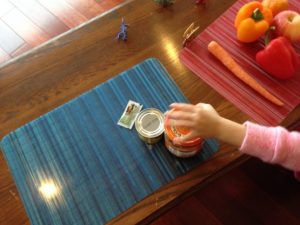
Little Sister first put the radish in the red group, but after a few bites she could get putting the radish into both at the same time.
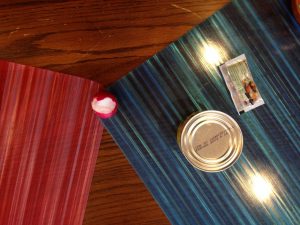
Grouping and categorizing skills are really more of a system for organizing information. Like other skills, they get better with practice. Kids need lots of experiences with categorizing activities. The stories and the grocery store were a golden opportunity for this brain play, or should that be a red hot opportunity?
